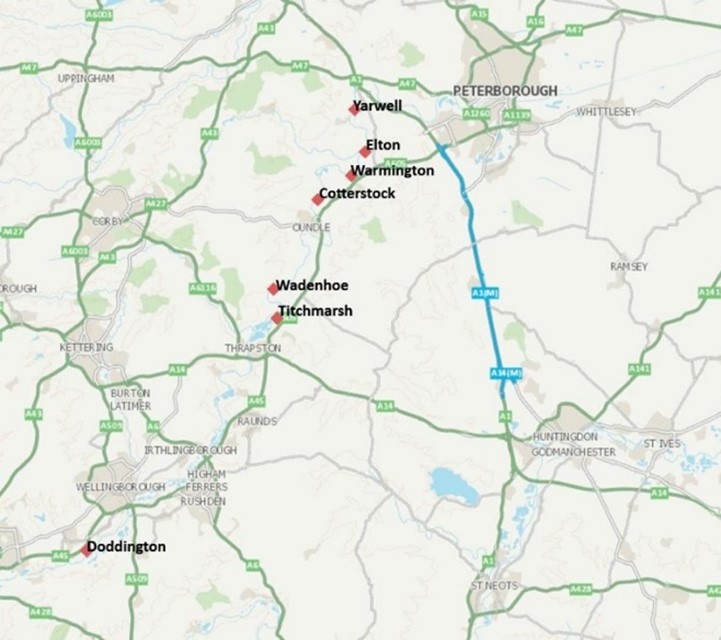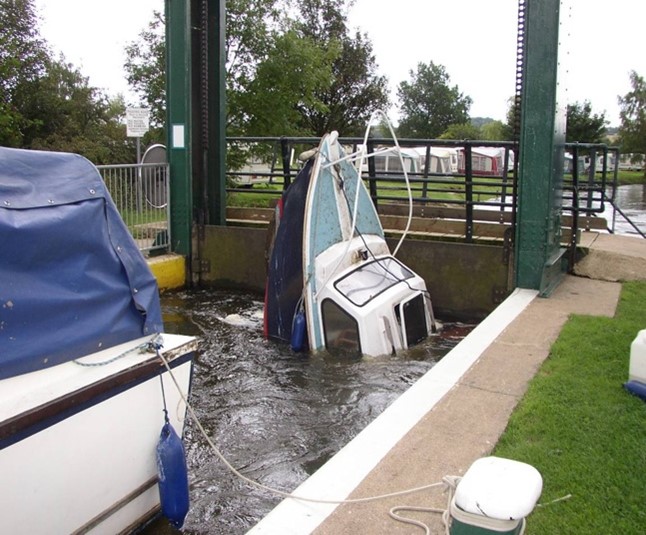Nene Lock Reversals
Overview
Welcome to the River Nene Lock Reversal project.
On the River Nene there are 38 locks. At seven of these locks, reversal has been used as a method of flood risk management during heavy rainfall and high river levels. The warnings we provide about lock reversal also signal to river users that the river is full and navigation is unsafe.
We have been reviewing the effectiveness of this approach for many years and have decided that the benefits of lock reversal are outweighed by the downsides.
We plan to end lock reversal for the seven locks between 2025 – 2030. We will stage this over five years by grouping the locks. In each case we will discuss with interested parties how to achieve similar benefits to those currently granted by lock reversal.
Here you will find the latest news and progress on the project.
What is lock reversal?
Lock reversal is the practice of manually opening a lock to manage river levels during periods of heavy rainfall, increased flow and high river levels. Our operatives open gates at both ends of the lock so that water can flow through.

Where is the project area?
There are currently 7 locks which are reversed on the River Nene. These are: Yarwell, Elton, Warmington, Cotterstock, Wadenhoe, Titchmarsh and Doddington.

Why is the project needed?
The River Nene Lock Reversal project is delivering alternative methods of water level management. This will enable us to move away from a time-consuming manual process. It is not always possible to reach the locks in time to open them, and reversing locks is not effective in the case of major flood incidents.
Overall, this approach is not effective in reducing risk to people and properties. We believe that we could use resources more efficiently to achieve similar positive benefits.
Leaving locks open presents safety risks to river users who can be drawn into an open lock and boaters can get turned over by the strong currents. An independent report has shown that risks to river users increase when the locks are reversed. We send out messages to pre-registered river users (River Advice to Boaters) and put signage up when locks are reversed. However, we have still seen incidents where boats have been sunk in reversed locks and users lucky to escape with relatively minor injuries. Not all river users are registered to receive these messages and may enter the river in locations where there are no signs.


What are the alternatives?
We will discuss with interested parties how to secure similar benefits as lock reversal through different methods.
For flood risk reduction, we have already identified a range of measures including using sluices more efficiently at Warmington and Elton locks. We will work with each lock site to find out how to improve flood risk management without lock reversal using our resources more effectively.
For warning river users, strong stream advice will continue to be issued when there is a danger to navigation and boat users are strongly advised to follow it. In addition, we will work with interested parties to look at how we can improve alerts to river users about unsafe navigation conditions. This may be a common system for the navigation as a whole and / or local solutions for each lock.
Additional benefits may be achieved such as a better natural environment and more diversity of species if we use different methods. This will vary according to the different lock locations.
Funding
The source of funding will depend on the mitigation options identified. We will work with other partners such as Natural England, Wildlife Trust and local landowners to explore these options.
Who is involved?
Many of our teams are working collaboratively to deliver this project. This includes;
- operational field staff who you will see operating the locks
- asset performance teams
- flood risk management teams
- our waterways team who manage navigation and boating on the River Nene
- Major Projects and Programme Delivery Team.
We are working with ARUP and Jackson Civil Engineering who will be supporting design of any mitigation ideas. This will ensure technical designs are practical to build and operate.
Local landowners and communities are key to the success of this project. We will continue to engage with them.
How are we engaging with our stakeholders?
We have already begun meeting with landowners who are likely to be impacted by the change.
We have been in contact with the relevant Parish Councils and plan to meet with them in the near future to further discuss the project.
Other stakeholder groups have been identified and we will be making contact with these in due course.
Contact Us
Email: lnenquiries@environment-agency.gov.uk
Twitter: @EnvAgency
Environment Agency Customer Contact Centre: 03708 506 506
To report an incident (24-hour service): 0800 80 70 60
Flood warning information - Flood line: 0345 988 1188
Audiences
- Recreational and commercial river users
- Fishing clubs and representative associations
- Members of the public with an interest in the river, the species and conservation
- Businesses
- Members of the public
- Local councils
- Local authorities
- District and parish councils
- Land owners
Interests
- Flood management
- Specific projects, issues, or activity pages

Share
Share on Twitter Share on Facebook